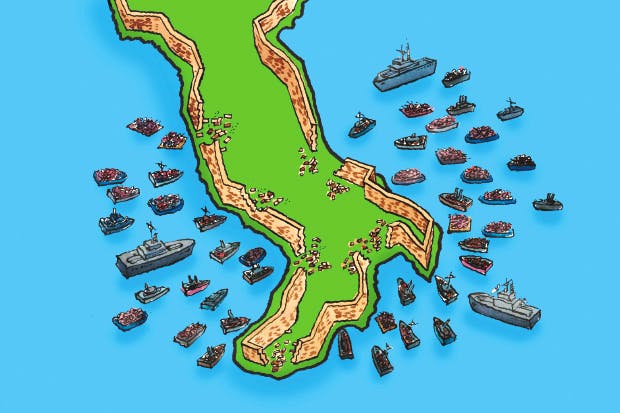When European leaders met earlier this month to thrash out an agreement on migration, they succeeded in rescuing German Chancellor Angela Merkel from the precipice. But it is already becoming clear that the deal they struck was more a temporary papering over of ideological differences on migration than a permanent solution. While the EU agreed on the possible establishment of migrant transit centres on European soil, disembarkation platforms in north Africa, and a general statement that illegal migration was a European problem, the detail of how all this would work in practice was ignored. Not a single European country volunteered to host a reception centre, and attempts to persuade governments in north Africa to sign up to the plan and cooperate on a disembarkation scheme have gone nowhere. Tunisia, Libya, Morocco, Algeria and Egypt have all declined to set up the temporary holding sites the EU is calling for. Human rights groups aren’t especially supportive of the idea either. So what now?
It falls to the European Commission to try and counter the lukewarm reaction to the plans by putting meat on the bones of the EU Council’s migration agreement. This week, the Commission released a few additional details of what this might look like; perhaps the most significant one of these was the proposal to pay £5,300 (€6,000) for each rescued migrant that an EU country takes in. Fresh out of ideas, it seems that Brussels has essentially settled on bribing European governments to take in migrants rescued in the Mediterranean on their way to Europe. The EU, in effect, sees no other option in the meantime but to throw cash at the problem, hoping that financial rewards will be enough of an incentive for countries like Italy, Greece, Spain, and France to accept the political risk of hosting migrants until their asylum claims are verified.
Yet it is difficult to see how this plan will endure for long. No other issue has torn at the seams of pan-European unity like the flow of illegal migration into the continent. The battle lines are many: Europeanists vs nationalists; southern Europeans vs northern Europeans; eastern and central Europeans vs southern Europeans; and the EU vs populist governments in Italy, Austria, Hungary, Poland, and the Czech Republic. Whatever solution Brussels proposes will anger someone, somewhere – which means that the unanimity the EU cherishes is an impossible mountain to climb. The EU then has two bad options: use the nuclear option to push through asylum reform despite strong opposition from multiple members; or go back to the drawing board.
With every day that passes without a common solution, the EU’s brand becomes further tarnished. The only winners in this story are the nationalist ministers and parties like Matteo Salvini, Viktor Orbán, Sebastian Kurz, the Sweden Democrats, and Germany’s AfD – fringe forces now winning seats in the parliament and forming governments as senior or junior partners. As has been said for years, migration remains a gaping wound to a European political establishment that had long taken its power for granted after running the continent for over a half-century. And the solution to this problem doesn’t appear to be anywhere in sight.






Comments